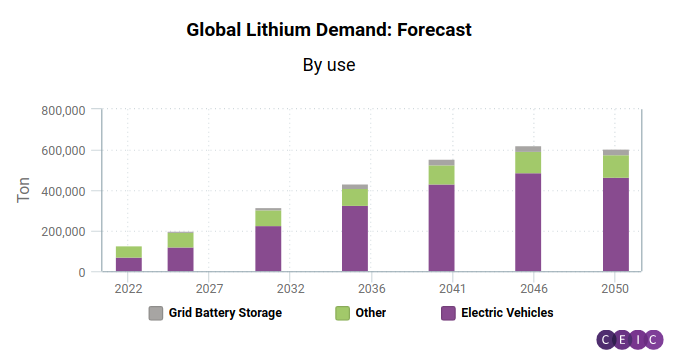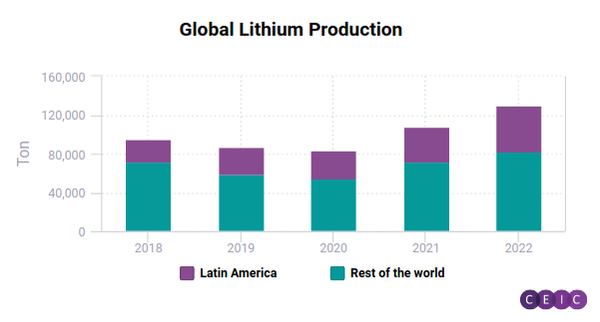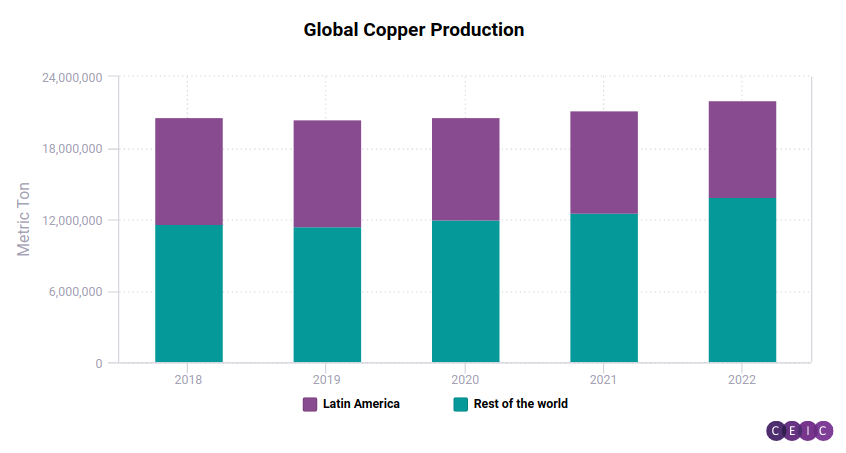
Latin America is poised to reap significant benefits from the rising demand for metals crucial to the global energy transition in the near future. Currently, the region plays a crucial role in the production of three essential materials: copper, lithium, and nickel. The escalating demand is expected to maintain a consistently high price level, resulting in a substantial influx of resources into the region. According to IMF forecasts, the global copper price will remain above USD 8,500 per tonne in the next five years, while the price of nickel is expected to increase from USD 25,867 per tonne in 2022 to USD 27,812 in 2027.

Data from the US Geological Survey available within CEIC shows that Latin America contributes to 36% of the world's copper production, while the global copper demand will surge from 25 million tonnes in 2022 to 31 million tonnes in 2030 and further to 36 million tonnes in 2050, according to forecasts by the International Energy Association (IEA). The most rapid growth is expected in the copper demand linked to sustainable energies, which is predicted to increase by 60% in 2030 and a remarkable 86% in 2050 compared to the levels in 2022.

Lithium holds the greatest potential in Latin America, mainly because of its extensive use in rechargeable batteries for electric vehicles. The global demand for lithium will soar from 130,000 tonnes in 2022 to 318,000 tonnes in 2030 and an astounding 600,000 tonnes in 2050. Latin America contributes to 36% of global lithium production and holds an impressive 55% share of the 98 million tonnes of lithium resources available worldwide, making it likely to witness a substantial increase in revenues.

In contrast, Latin America currently accounts for only 4% of the global nickel production, with Indonesia dominating the market at 48%. Nevertheless, the region is expected to benefit from the growing demand for nickel in sustainable energies. This segment represented 12% of total demand in 2022 and is projected to rise to 27% in 2030 and an even more significant 34% in 2050.
*The market value is estimated by multiplying total production by current prices.
The CEIC Global Database provides access to a vast database where users can gain insight into the ever-changing dynamics of world economies.
.png?width=160&name=ceic-logo-Vector%20logo%20no%20tagline%20(002).png)
